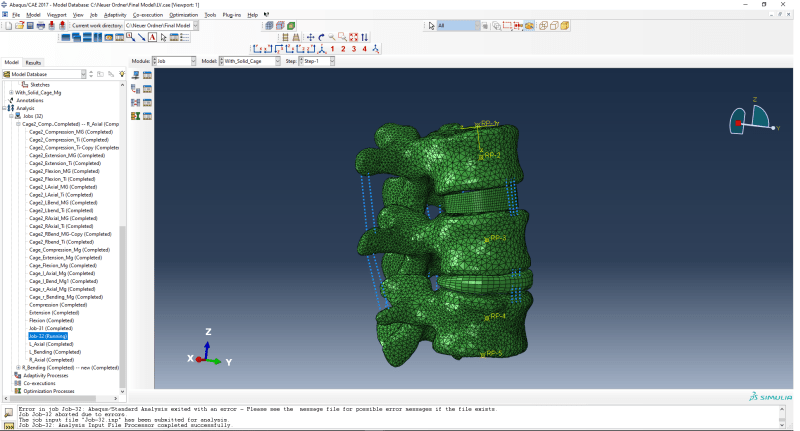Heelo everyone,
im starting this thread again because the last one didnt get solved and im still getting the same problem, ill make it clear, my model consists of two vertebrae and a cage, the cage have youngs modulus of 45000 MPa and a poisson ratio of 0.3, my mobel till this point is working well i got results close to literature. after that i increased the youngs modulus to 115000 MPa and the poisson ratio to 0.41, the increments keeps attempting until it aborts.
what i tried to slove the issue is the following, i checked my units and they are all good, then i decrease the increment size from 0.0001 to 1E-5, after decreasing the first couple successful increments, abaqus starts attempting to finish till it aborts.
so if anyone please can help it will be appreciated, and if someone can explain why this is happeing, whats the relation between increasing the youngs modulus, and my job stop running.
and thanks
im starting this thread again because the last one didnt get solved and im still getting the same problem, ill make it clear, my model consists of two vertebrae and a cage, the cage have youngs modulus of 45000 MPa and a poisson ratio of 0.3, my mobel till this point is working well i got results close to literature. after that i increased the youngs modulus to 115000 MPa and the poisson ratio to 0.41, the increments keeps attempting until it aborts.
what i tried to slove the issue is the following, i checked my units and they are all good, then i decrease the increment size from 0.0001 to 1E-5, after decreasing the first couple successful increments, abaqus starts attempting to finish till it aborts.
so if anyone please can help it will be appreciated, and if someone can explain why this is happeing, whats the relation between increasing the youngs modulus, and my job stop running.
and thanks

